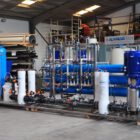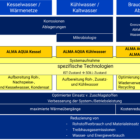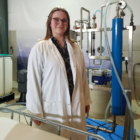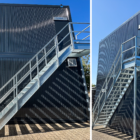Permeate Staged Reverse Osmosis (PSRO) is a specialized development of the classic reverse osmosis system that aims to maximize water recovery and optimize energy consumption. This process is mainly used in industrial applications such as seawater desalination, wastewater treatment and process water treatment. This article describes in detail the technical background, design, advantages, challenges and solutions of permeate-staged reverse osmosis.
Table of contents
Technical basics
Functional principle of permeate-staged reverse osmosis
In contrast to classic reverse osmosis, permeate-staged reverse osmosis uses the permeate from a first reverse osmosis stage as feed water for a second stage. This allows the water quality of the permeate to be further improved or adapted to specific requirements. This staging allows:
Higher purity: By re-filtering the permeate, residues of dissolved substances are almost completely removed.
Efficient use of resources: The system makes optimum use of energy and infrastructure, especially in applications with high purity requirements.
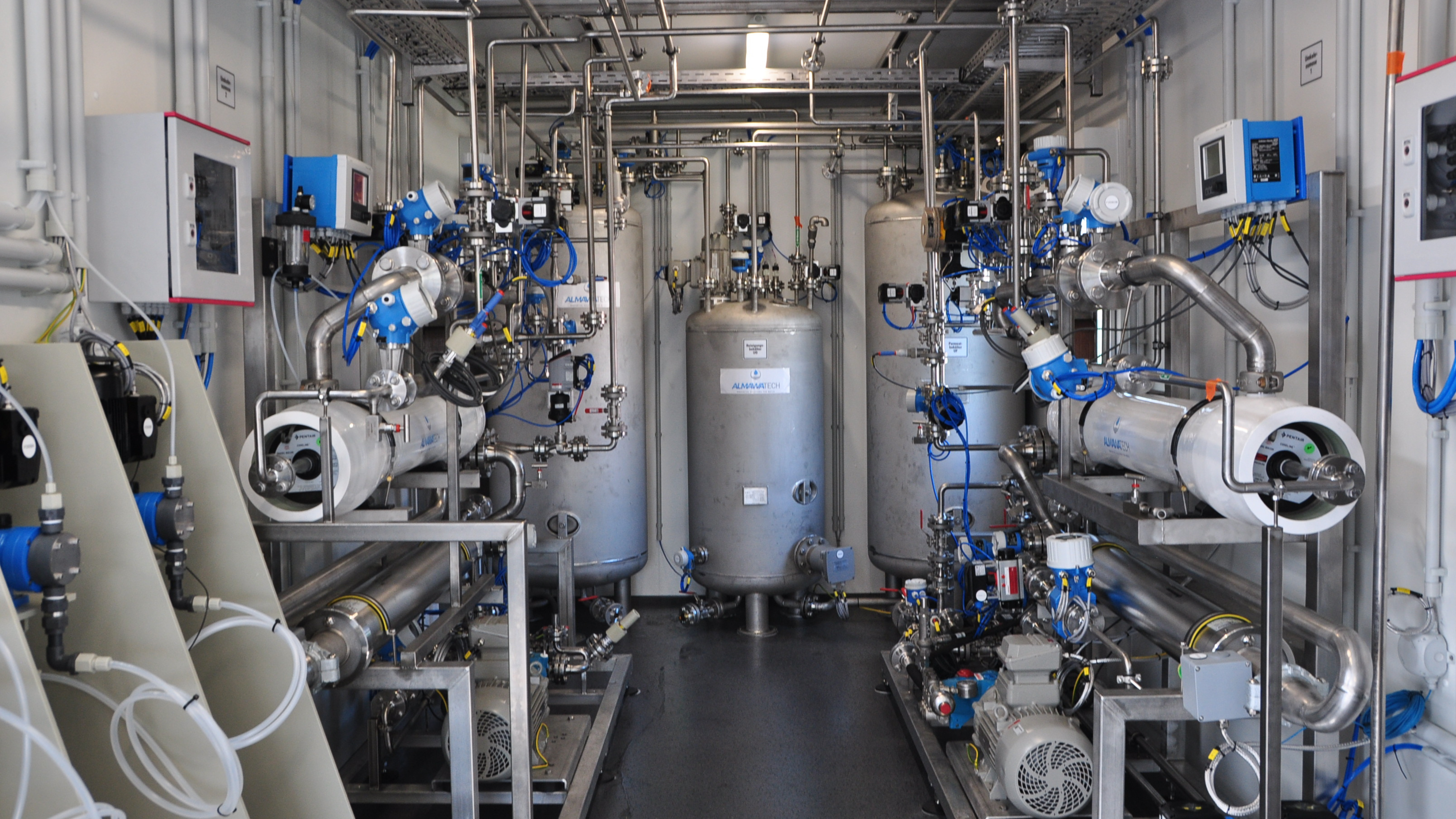
Photo: Our ALMA OSMO Process concentrate stage reverse osmosis system, installed in the ALMA Modul technical room container
Structure of a permeate-staged reverse osmosis system
A typical system consists of:
First stage: Classic reverse osmosis with a high salt retention rate to reduce the main contamination of the raw water.
Intermediate treatment: Optional, to condition the permeate from the first stage (e.g. by pH adjustment or fine filtration).
Second stage: Processing of the permeate from the first stage through membranes with higher efficiency for specific target parameters.
It is controlled by sophisticated control systems that monitor the pressure, flow rate and water quality in real time.
Areas of application
1. semiconductor and electronics industry
Production of ultrapure water (UPW): For production processes in which even the slightest impurities (such as silicates, bacteria or organic residues) can lead to malfunctions.
2. pharmaceutical industry
Production of water for injection (WFI): Permeate-staged reverse osmosis offers a safe and cost-effective alternative to traditional distillation processes.
3. power plant and boiler feed water
Production of ultra-pure water: To prevent scale formation and corrosion.
4. seawater desalination
Production of drinking water with an extremely low residual salt concentration for demanding applications.

Photo: Our reverse osmosis system for treating wastewater for internal reuse (Water-ReUse)
Advantages of permeate-staged reverse osmosis
1. increased water purity
Doppelte Filtration sorgt für Permeat mit extrem niedrigen Leitfähigkeitswerten (< 0,1 µS/cm).
Reduces specific impurities such as boron, silicate or TOC (Total Organic Carbon).
2. energy efficiency
The pressure requirement of the second stage is lower, as the permeate from the first stage is already almost free of solids and dissolved salts.
3. flexibility and scalability
Modular design allows adaptation to specific requirements and simple expansion as capacity needs increase.
4. cost savings
Reduced chemical consumption in pre- and post-treatment.
Reduced load on subsequent treatment steps such as electrodeionization (EDI).
Challenges in practice
1. additional investment costs
The construction of a second stage requires additional membranes, pumps and control components.
2. extended control complexity
The optimum coordination of both stages requires precise monitoring and control in order to avoid efficiency losses.
3. scaling and fouling
Organic and inorganic impurities can contaminate the membranes in the second stage. This requires sophisticated pre-treatment of the feed water.
4. chemicals management
Despite the reduced use of chemicals, targeted dosing is essential for pH adjustment and antiscalant application.
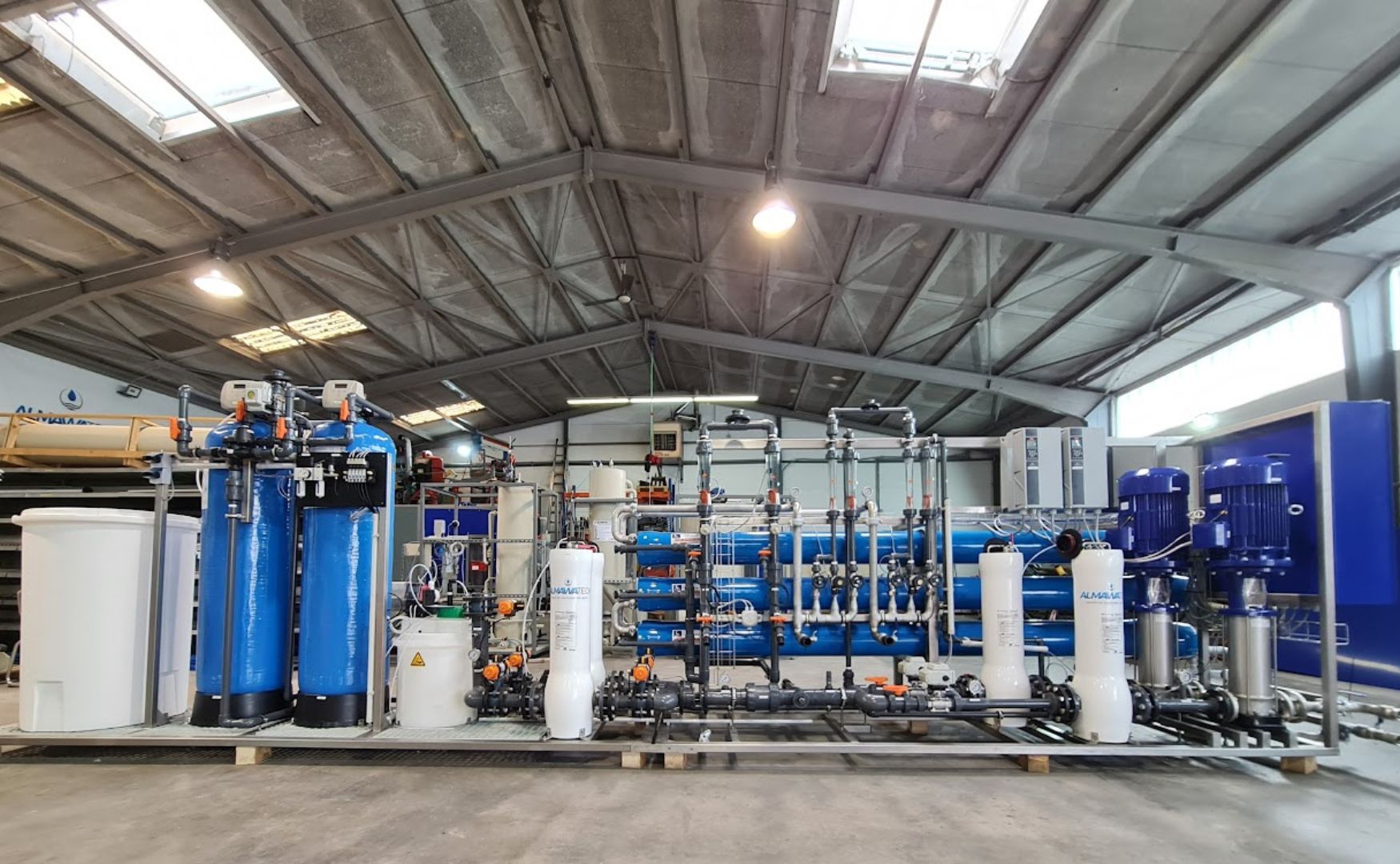
Photo: Our reverse osmosis system for the production of demineralized water, incl. softening system
Practical example: Use of a permeate-staged reverse osmosis system in the semiconductor industry
A manufacturer of semiconductors needs water with extremely high purity requirements for the production of solar cells, for example.
Initial situation
Raw water: Tap water with TDS of 300 mg/l and TOC of 2 mg/l.
Erforderliche Wasserqualität: TOC < 0,05 mg/l, Leitfähigkeit < 0,05 µS/cm.
Solution
First stage: Reduction of TDS to 10 mg/l and TOC to 0.2 mg/l.
Zweite Stufe: Weitere Entfernung von Spurenstoffen, Erreichen einer Leitfähigkeit von < 0,1 µS/cm.
Post-treatment: Integration of an EDI system for final polishing.
Results
Compliance with all legal regulations and industry-specific standards.
Reduction of water consumption by 30 % through optimized circulation.
Cost savings of 20 % compared to alternative processes.
Conclusion
Permeate-staged reverse osmosis is a highly specialized technology that is indispensable in applications with extremely high purity requirements. It offers an effective combination of efficiency, flexibility and resource conservation. Despite higher investment costs, these systems quickly pay for themselves through savings in operating costs and improved process reliability.
For further information on our products, please feel free to contact us at any time!




